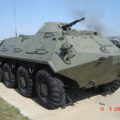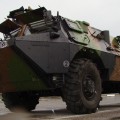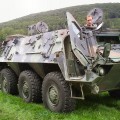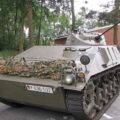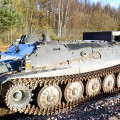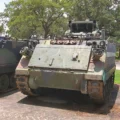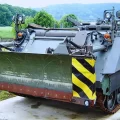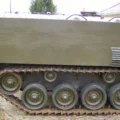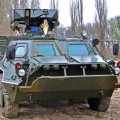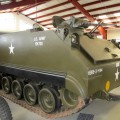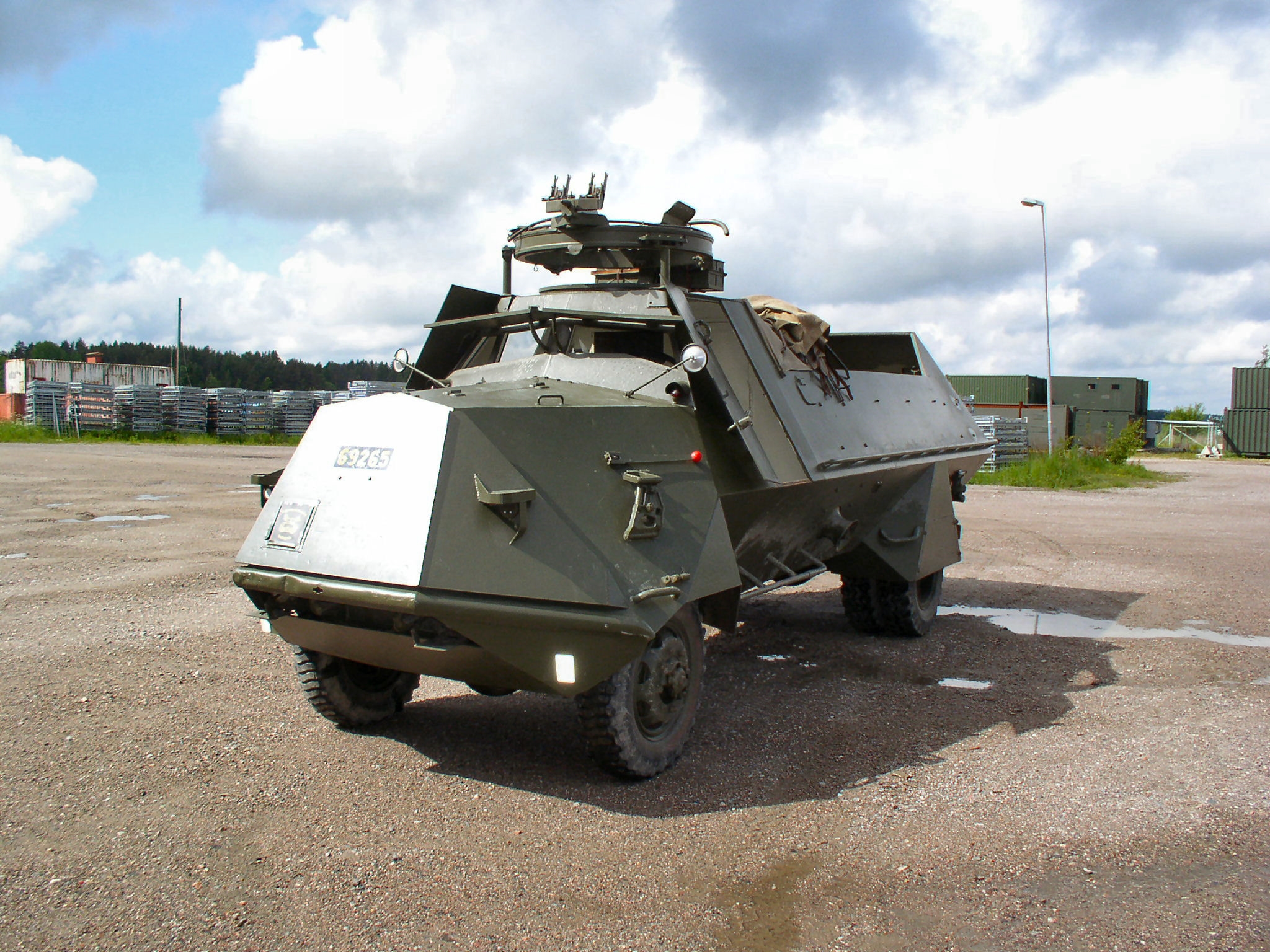
SKP M-42 | |
| Zemlja | Švedska |
| Tip | Oklopni nosač osoblja |
| Fotografija | Tord Vedman |
| Tema | Album of 16 photos walk-around of a «SKP M-42» |
Foto-galerija a SKP M-42, Terrängbil m/42 KP (Tgbil m/42 SKP/VKP), meaning “Off-road vehicle 42” with a secondary designation of “Scania, Bodywork: Armoured” or “Volvo, Bodywork: Armoured”, was the Swedish army’s first armoured personnel carrier, developed as a stop-gap measure during World War II. In 1941, when tanks were organized into a unit of their own, it was clear there was a desperate need for a troop carrier able to both keep up with the tanks and provide protection against artillery shrapnel and small-arms fire. Due to the war there were no international suppliers to buy from, so the only option was to develop a domestic solution. AB Landsverk designed an APC consisting of a chassis from a regular army lorry equipped with an armoured shell.
Izvor: SKP M-42 na Vikipediji
Pogledajte i:
Čaj Terrängbil m/42 KP (TGB M / KSNUMKS KP), što znači "terenski automobil m / KSNUMKS KP" (KP skraćenica za Karosseri Pansar, "karoserija oklop"), bio je rano švedski pešadijski borbeno vozilo razvijen tokom Drugog svetskog rata. To je u suštini bio kamion sa pogonom na 4 točka za terensku vožnju, opremljen oklopnim telom izduženim preko i oko kreveta, sa odeljkom za transport trupa iza kabine za odred od 16 vojnika.
Varijante:
Na osnovu šasije postojale su dve osnovne varijante:
– Scania-šasija zasnovana na varijanti, označena kao "tgb m/42 SKP" (Scania KP)
– Varijanta zasnovana na šasiji Volvo, označena kao "tgb m/42 VKP" (Volvo KP)
Tehnički opis:
Oklopno telo je sadržavalo 8 do 20 mm (0.31 u do 0.79 in) debeli zavareni kosi oklop svuda okolo, što ga čini efikasno neprobojnim. Za iskrcavanje i ukrcavanje, odeljak trupa je imao oklopni otvor na svakoj donjoj strani vozila, tačno ispred točkova zadnje osovine.
Odjeljak trupa prvobitno nije imao fiksni krov i imao je delimično otvorene strane namenjene pešadiji da puca iz. Umesto fiksnog krova, zadnji kraj tela je imao punu visinu strane, tako da cerada može da se postavi preko trupa odeljku između kabine.
U KSNUMKS-u, većina preostalih vozila je ažurirana sa novim potpuno zatvorenim odeljkom za trupe sa otvorima za pucanje i zadnjim vratima za brzo iskrcavanje.
While always intended for fixed armament, featuring a round hatch sized hole on the cabin roof, the vehicles initially lacked any permanent armament, and the cabin roof hole was often bolted over with a metal plate. Instead, the vehicles were outfitted with storage for the weaponry, munition, and equipment of the panzergrenadiers, such as machine guns, hand grenades, and man-portable anti-tank systems.
One vehicle was early on trialed with a 20 mm akan m/40 autocannon, but the first standard fixed armament was a single ksp m/39 machine gun fitted in a rotating turret ring on top of the cabin. This machine gun could fire either the 8×63mm m/32 machine gun cartridge or the 6.5×55mm m/94 rifle cartridge depending on the barrel.
In 1956, the existing vehicles received new armament in the form of twin ksp m/36 lv dbl (luftvärn dubbel) anti-aircraft machine guns. These could also fire the 8 mm m/32 and 6.5 mm m/94 rounds depending on the barrel (post 1972 also the 7.62×51mm NATO round).
During the 1983 REMO-upgrade, the ksp m/36 twin-mount was replaced with two 7.62 mm ksp m/58B light machine guns in single mounts, one on the cabin roof and one at the back of the new troop compartment roof. The new enclosed compartment also featured three portholes on each side of the vehicle for use as firing ports with assault rifles.
Broj posetilaca : 2253


